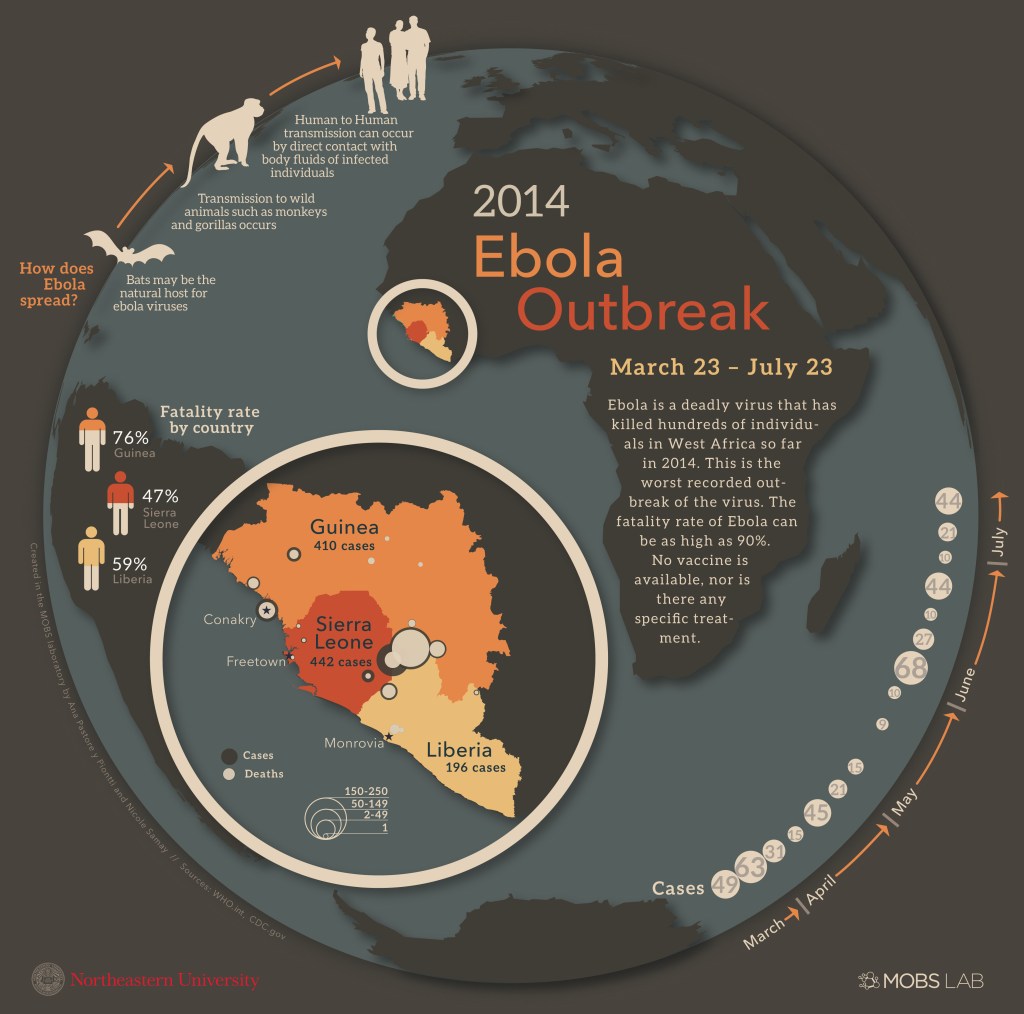3Qs: Global impact of the Ebola outbreak

The Ebola virus has been spreading in West Africa since March, but the current outbreak over the past few weeks has reached new heights and elevated the crisis. More than 650 people have died, and in recent days it was learned that Sierra Leone’s leading Ebola doctor in charge of battling the outbreak has himself contracted the virus. Here, network scientist Alessandro Vespignani, the Sternberg Family Distinguished Professor of Physics at Northeastern who has developed computational models to predict the spread of infectious diseases, discusses the Ebola outbreak. Vespignani holds joint appointments in the College of Science, the Bouvé College of Health Sciences, and the College of Computer and Information Science.
What sparked the recent surge of the Ebola virus, and could it have been predicted?
Ebola’s outbreaks among human populations usually result from handling infected wild animals. Although the virus reservoir has not yet been identified with certainty, in Africa fruit bats are believed to be the natural hosts for the virus. It is therefore impossible to predict the start of an outbreak, although it is possible to project its unfolding if containment and mitigation policies are not implemented in a timely manner. Human-to-human transmission mostly occurs through blood or bodily fluids from an infected person, thus affecting mostly caregivers in the family or in healthcare settings where the proper cautions aren’t taken. Isolation of cases in well-equipped healthcare settings and the use of rigid protection protocols for handling burial procedures are crucial for the containment of outbreaks.
How is this outbreak different from those that have occurred in the past?
Since March, the World Health Organization has reported more than 1,000 cases of Ebola with a fatality rate of about 60 percent, depending on the specific places. Although previous outbreaks recorded fatality rates of up to 90 percent, this current outbreak is the worst in terms of the number of infected people. This outbreak is somewhat unique also because it has hit major urban areas such as Conakry, the capital city of Guinea. In the past, Ebola has usually emerged in less populated rural regions. Isolation and control in large cities is obviously more challenging. Capital cities are also major transportation hubs for travelers potentially spreading the outbreak in other geographical regions.
Does this outbreak present an international concern and if so, how great is that concern?
The risk of infection for travelers is minimal because infection results from direct contact with sick individuals. However the presence of the disease in major cities with airports introduces the possibility that infected people not yet in the acute stage of the disease are going to get on a plane and spread the virus internationally. This global spreading can be modeled by using human mobility network data. Although we cannot rule out the possibility of cases spreading to major European or American airport hubs, the probability for these events is quite small because the major airports in the region have limited traffic to international destinations. On the other hand, the persistence in time of the outbreak and the growing number of cases are increasing the probability that we might see it spread internationally. The makes it imperative to win the battle in containing the outbreak in the region as soon as possible.





